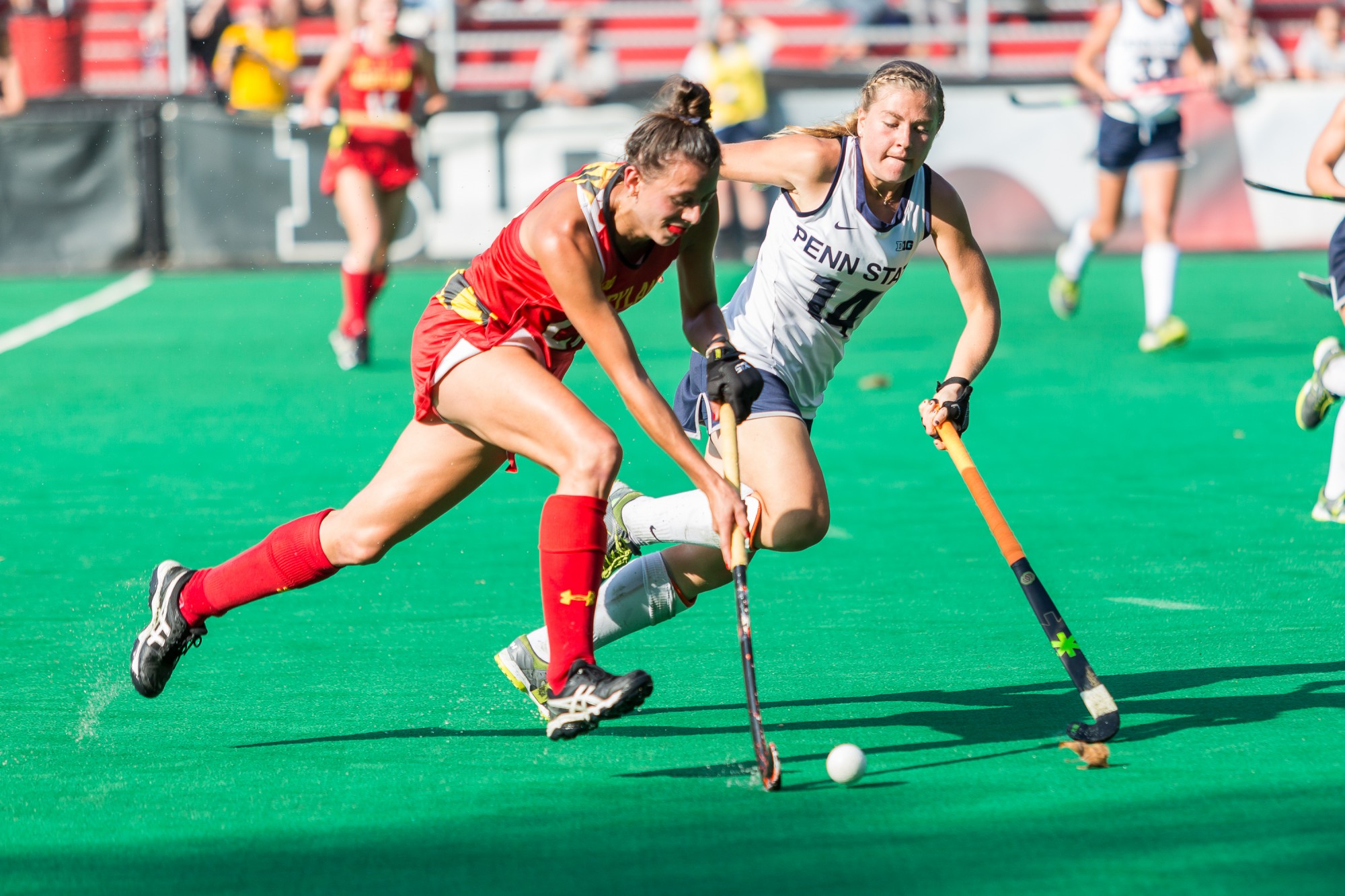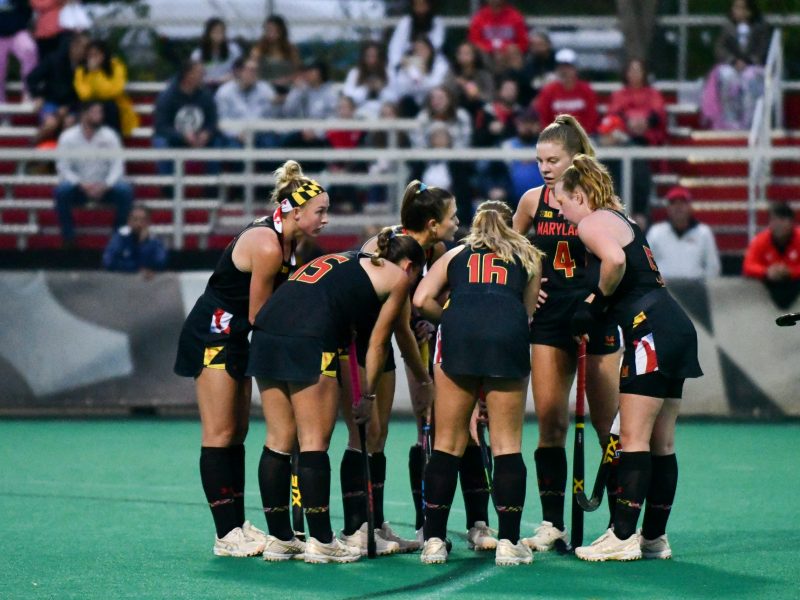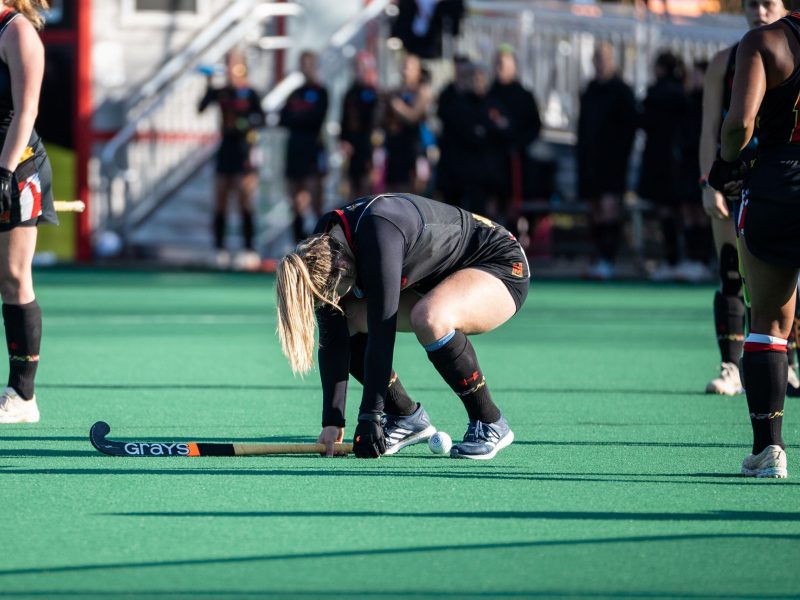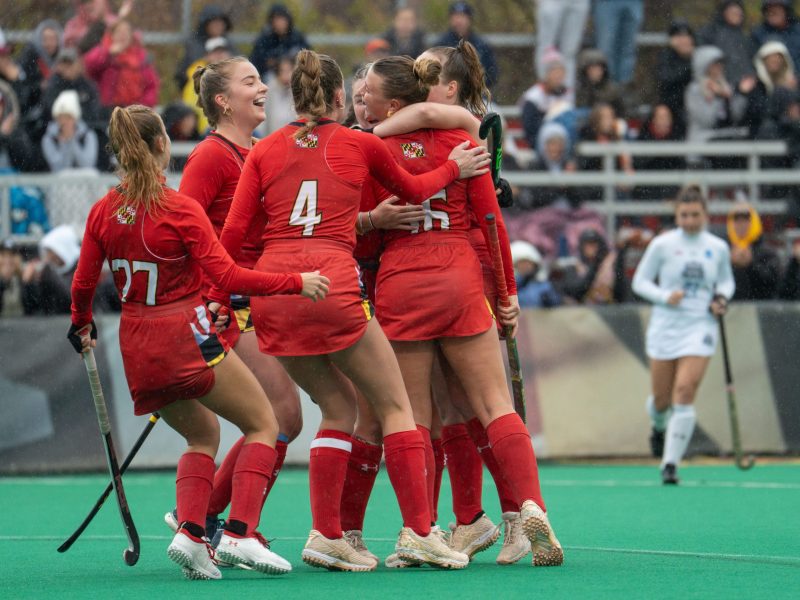Frustrated with the Maryland field hockey team’s training, coach Missy Meharg planned a players-only practice Oct. 2. She and her staff organized a recruiting trip, leaving defender Marissa Cutry and midfielder Lein Holsboer to lead the team’s drills.
It’s a strategy Meharg, in her 30th season at Maryland, has used before. The Terps had lost three of four games.
After several slow starts, the Terps arranged attacking drills on the edge of the circle. They spoke openly. Cutry and Holsboer assured the younger players — many who boast decorated high school careers — they shouldn’t feel pressure.
Since that practice, Maryland has won seven straight games, most recently a 3-0 win against Michigan State in the Big Ten Tournament quarterfinals. The No. 2-seed Terps face No. 3-seed Penn State on Friday in Big Ten tournament semifinal.
“We were at a point where our training wasn’t consistent,” Meharg said. “We weren’t making each other accountable. [The coaches] can yell all we want.”
[Read more: Maryland field hockey stays hot with 3-0 win over Michigan State to start Big Ten tournament]
Maryland’s aggressive press, which has become a defining characteristic of Meharg-led teams, was a popular talking point as the Terps tried to regroup. They discussed how to improve their counterattack and better contain opposing attackers.
Perhaps the most significant takeaway was determining how to push a variety of goal scorers. Holsboer and forward Linnea Gonzales anchored the attack in September. But the Terps don’t have a forward who can take control of the game in its final moments like they have had in the past. They needed a team effort.
So, during that practice, if a pass was in the wrong place, if the ball speed wasn’t adequate or if the counterattack wasn’t aggressive enough, someone on the field spoke up.
When the practice concluded, Cutry and Holsboer were eager to share the team’s progress with Meharg.
“We took ourselves back to the little girls who had just started playing and loved the game,” defender Melissa Wilken said. “It was intense, because we’re all so competitive. We started to love it again as opposed to feeling the pressure.”
[Read more: ‘Just a legend’: Katie Bam uses championship experience to improve Maryland field hockey]
Cutry and Holsboer’s comments made Meharg eager to see how the Terps would perform when the coaching staff returned. But again, she was left frustrated.
The Terps jogged instead of sprinted. Their first touches on the ball were bothersome.
“We confronted them,” Meharg said, “and basically the message was go back to what we did yesterday.”
In the Terps’ final practices before their Oct. 6 contest against Michigan State, the players communicated more. They didn’t hesitate when taking shots. One-on-one drills increased the intensity and encouraged the Terps to take shots with more urgency.
“Vocally telling people to rip it or drop it,” Holsboer said.
They emphasized transitioning across the field. Suddenly, the team’s passes appeared where the Terps expected them. They played quickly and together. They were rewarded with wins.
Quick starts helped Maryland take control in its final six regular season games, mimicking its energy from the players-only practice.
“From where we were to being No. 2 in this league is phenomenal,” Meharg said.



